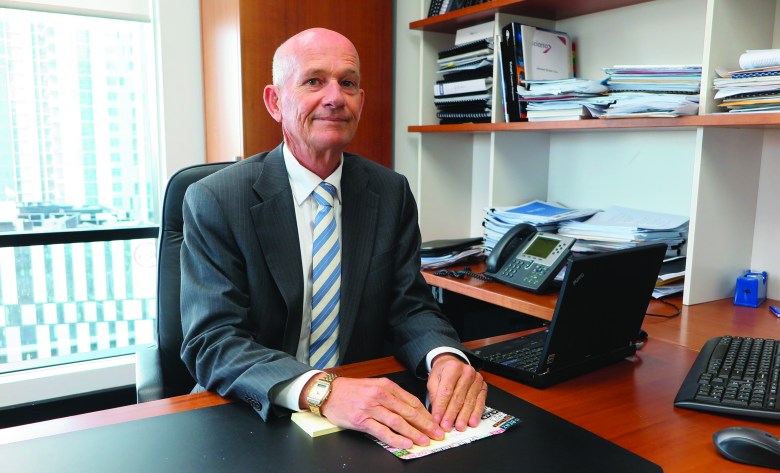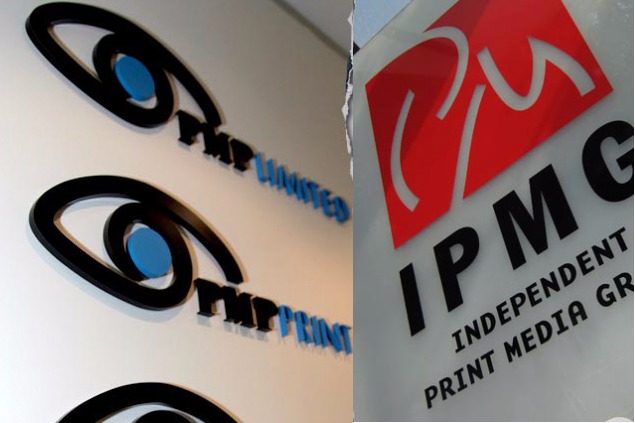
If the plan proceeds as its proponents believe it should the new year will see a new entity at the top of the Australian print tree, the newly merged PMP IPMG business.
With combined sales of some $1.28bn the new business will dwarf the next in line, being about double the size of the diversifed IVE Group which now includes Franklin Web and AIW. PMP and IPMG have about 1200 employees each but this number is bound to shrink significantly in a merger. Magazines, catalogues, books, packaging, and distribution are the main activities, although IPMG has been developing some digital businesses, which now comprise about ten per cent of its business.
Motivation Hannan – Exit strategy, growth opportunity
For the Hannan family an exit strategy for the business they have spent half a century building into a national powerhouse is likely the main motivator for the deal. Growing the business further in such an ultra-competitive market and one that is unlikely to show much growth is not an easy ask. IPMG does have a digital arm where it is building new media, this now represents
10 per cent of the business, but is a very different business from high volume print, is more susceptible to competition, and like any new economy digital business an unknown disruptor could come in and sideswipe it at any time.
Other exit options included selling the business, but with private equity having being badly burned in print the number of potential buyers would be close to zero, with Blue Star parent IVE unlikely to be interested given a merger between the two failed just a couple of years ago. They could have taken it public with an IPO, but that is a long and costly business which may or may not work out. Blue Star parent IVE was successful a year ago, but it is a more diversified group, both in print and outside it. IPMG has tried the merger route before, with PMP itself fifteen years ago, in a deal that was knocked back by the ACCC, and with Blue Star itself in 2014, which didn’t get as far as the ACCC.
Under the terms of the deal the Hannans have moved from having an illiquid asset to liquidity, they can cash in all or part at any time, well after two years, or they could increase their stake by another 13.1 per cent and become majority owner of PMP, in other words they have serious options. They have already become the biggest single shareholder in PMP, and have two seats on the Board with Michael Hannan and Stephen Anstice the nominated duo. Their stake in PMP is 37 per cent, which was valued at $119m at the time the deal was announced, although it shot up by a third on news of the merger.
Motivation PMP – Market clout, capacity rationalisation
For PMP the deal is all about market share and capacity rationalisation. PMP chairman Matthew Bickford-Smith has just told the PMP AGM that over-capacity remains a major issue significant problem in the industry, and that the solution is consolidation, he could not have put it in stronger terms: “This year, we are at the point where the current structure of the industry is no longer sustainable. The Board is of the view that consolidation is an important and necessary strategic response to sustain PMP’s future.”
Adding the IPMG business will increase PMP’s printing division significantly, while taking out capacity from the market. IPMG prints the two biggest magazine print runs the country, the Coles and Woolies promotional magazines given away for free at the checkout, and a host of other catalogues and magazines. PMP CEO Peter George has just told investors that catalogues will be the core of the PMP business going forward, as high volume magazines continue to decline. The love affair of the Aussie housewife with the printed catalogue shows no sign of abating, the ROI for marketeers is proven and not changing.
Also appealing is that the deal with IPMG will take out a significant amount of capacity, as the merged entity is certain to decommission older presses and finishing lines, which means PMP will be left with highly efficient modern plant, which it needs to rival the likes IVE-owned Franklin Web and AIW with their automated lean plants, while Blue Star Web is investing in a brand new $12m manroland heatset press, due to come online late next year. The new Hannanprint factory at Warwick Farm is case study in super-efficient production, with its massive manroland web presses and highly automated finishing and it is not hard to see plenty of PMP work flowing in.
PMP has just upgraded its book printing business Griffin Press, it is now according to independent assessment the most advanced book printer in the world with its end to end book manufacturing line, which addresses the need for short run work, mitigates against any potential easing of the parallel import restrictions on books, and will bring back work from overseas. PMP of course also has its distribution arm Gordon & Gotch, which this year has been bolstered by picking up the Bauer Media account when Bauer decided it was going to cease its own distribution, and this business will only benefit from having the IPMG accounts on board. With books positioned for growth, and distribution looking good, it is the print business that PMP has to address, which it has done decisively with this deal.
Shareholders
A PMP shareholders meeting on December 16 is certain to give the all clear for the deal to go through, given that PMP shares shot up by 37 per cent to a five year high on news of the deal. While they have slipped back by ten per cent since, shareholders will not want to see shares get back down to less than the 50 cents before the deal was announced. PMP’s institutional shareholders will see the value in the capacity rationalisation. IPMG is privately owned so no need for any further shareholder approval.
ACCC
Fifteen years ago the ACCC knocked back the merger between the two companies due to concerns over lack of competition should the deal have gone ahead. However this time around PMP is likely to argue that it is not in the printing market but in the communications market, and that market is now overflowing with a plethora of new different – digital – platforms and channels that simply did not exist in 2001. It will also argue that rival printers are firmly established. Those printers, and print buyers such as the supermarkets, liquor stores and household appliance retailers, will also make submissions, but PMP and IPMG will have taken soundings and will be confident that the ACCC will not be insurmountable this time around. The ACCC though has just released a statement expressing 'initial concerns' in regard to the heatset business – it says there will only be two main players, PMP and IVE – and in regard to distribution, which it says may lead to bundling deals which are disavantageous to competitors. The ACCC has to weigh the risks to the market against the risks to the businesses, no-one imagines that PMP and IPMG can grow their businesses as seperate players, and in fact the other far worse scenario is more likely, that they shrink or ultimately go under if the work is not there to sustain them.
Competition
The catalogue and magazine sector is ferociously competitive, with Franklin, AIW and Blue Star Web – now one company thanks to IVE spending $116 to buy the two Melbourne outfits – leading the fight against the big two in catalogues. Whether the new PMP IPMG business be able to lower prices further is unknown, certainly no-one wants that to happen, and Peter George has made a statement in walking away from unprofitable work in the past two years. Another unknown is Fairfax, which is now attempting to muscle in on the catalogue market as its newsprinting business continues to fall, and is equipping its presses for semi commercial (catalogue) printing for when they are not pumping out the newspapers, which is much of the time these days.
How PMP IPMG treats its customers will be key, part of the reason for the Geon collapse was that the customers went from having a personal contact with the owners of the print businesses – the Don Elliots and Ron Hoolahans – to dealing with anonymous account managers who were there one year and gone the next, and it didn’t go down well, enabling the remaining owner-operated print business to pick off plenty of work from the ailing giant.
Staff
Biggest losers out of the deal will be some of the staff at the two operations. There will be a shedding of print industry people, and for some of them it will represent the end of their careers in print, given that the industry continues to shrink while automation increases, so opportunities will be limited. PMP and PMG both have about 1200 staff on the books, you could fairly reasonably expect that after three years at least a third of them will have gone, and after five years the workforce will have shrank to half its present size, with most of those leaving never to return to print.
Sites
IPMG operates five printing businesses; Bolton Print in Cairns, InPrint, PEP and InPack in Brisbane, Offset Alpine in Sydney, and Hannanprint which has plants in Sydney and Melbourne. PMP also prints in Brisbane, Sydney and Melbourne as well Perth, Auckland and Christchurch. Its book printer Griffin Press runs in Adelaide. In his presentation to investors Peter George said that there will be ‘optimising of the operational footprint’, in other words site closures, which will deliver the operational and back office savings that the investors have been promised.
The industry
Nothing stays the same, that is the nature of life. No-one can argue with PMP chairman Matthew Bickford-Smith when he says that ‘the current structure of the industry is no longer sustainable’. He is referring to the high volume print industry space that PMP and its rivals inhabit.
The print industry enjoyed fairly constant growth throughout the 20th century, living through the emergence of first radio then television. However the advent of the internet at the beginning of this century has had a far more profound impact than either of those mass broadcast technologies, allowing people to choose what they want to read and when they want to, and to personalise the preferences, so consumers are not buying print, which means the underpinning economics of supply and production are seriously threatened, as the industry comes under sustained structural pressures which are only going to increase. In the high volume print world directories have virtually gone, newspapers are on the way out, magazines are declining, only catalogues are showing resilience.
Two of the country’s top three printers joining forces will impact on the other high volume printers, how much it impacts the industry as whole remains to be seen. For those in the print industry the best options for the future remain working in and preferably owning a niche, integrating print with digital, offering a range of marcomm solutions, and getting as close as possible to customers.
Comment below to have your say on this story.
If you have a news story or tip-off, get in touch at editorial@sprinter.com.au.
Sign up to the Sprinter newsletter



